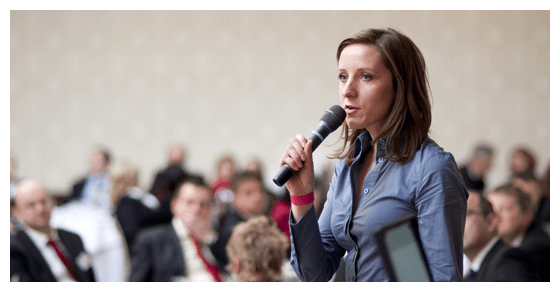
Listening for the Local
Many Americans are enthusiastic about deliberative democracy, but appalled by its actual practice, especially when it comes to local forums of civic life. In school board meetings, city council sessions, and public hearings all across the nation, ordinary citizens have a tendency to botch—and occasionally even abandon altogether—the democratic ideals of reasoned debate and rational decision making.
In a recent issue of the Quarterly Journal of Speech, I suggest that we can learn a lot from these deliberative failures—but only if we are willing to listen closely to ordinary civic speech.
For too long, we have limited our attention to national and international forums of public address, where professional politicians routinely deliver scripted bouts of oratory, all but ignoring local political cultures, where ordinary citizens frequently participate in unscripted public debates. What would it mean to supplement our ongoing interest in official forms and forums of public address with careful considerations of ordinary civic discussion and debate?
At the very least, supplements of this sort would allow us to broaden our understanding of persuasive artistry, expanding it to include not only an orator’s selection of words but also the acoustic contours of their delivery. No longer would we admire the art of public address apart from its most aesthetic dimension: vocalics. No longer would we ignore the fact that oratory has a sound, the meaning of which often exceeds—and sometimes even counteracts—an orator’s selection of words.
This raises another, more challenging question: How are we to account for this acoustic excess? To make sense of oratorical sound, we first must record it. Before the phonograph, this was a difficult task. Recording public speech meant writing it down, usually in real time. And because pens were frequently slower than tongues, even with the aid of shorthand techniques, written records of public speech often were incomplete, yielding little more than an orator’s selection of words. Verbal content without vocal form was the scribe’s standard.
The phonograph changed all this. “Edison’s phonograph liberated the larynx from the logos, from the duty to make linguistic sense when it is recorded,” John Durham Peters explains. “Sighs, snorts, yawns, laughs, whispers, vocalizations of all sorts after 1878 start to become subject to recording.” If earlier written records strained oratory through the sieve of the symbolic, analog recordings preserved fragments of the real as well. Verbal grit and vocal grain alike were easily captured. The event of speech had entered the age of mechanical reproduction.
Today’s digital recording technologies have made this even easier, allowing spoken discourse to be paused, repeated, edited, remixed, and mashed up. More important, they have made it simple to transcribe. Listeners can play, listen, pause, and write—then repeat this process to test the accuracy and, if desired, increase the detail of their transcripts. When we begin with digital recordings, the verbal, vocal, and visual contours of public speech are all easily rendered on the page.
Why, then, does our bias toward word choice persist? There are two basic answers to this question. The first is historical. Public speech prior to the advent of analog and digital recording technologies has long been of interest to communication scholars, especially scholars working in the tradition of rhetorical studies. Without the aid of voice recordings, however, pursuing this research interest often meant studying written records of public speech, specifically written discourse that orators read aloud (text-turned-talk) and spoken discourse that audiences wrote down(talk-turned-text). Great moments in public address, although renowned for their performative dimensions, often began and ended on the page. Literacy, not orality, became the condition of possibility for their documentation and analysis.
If the first answer is historical, the second is aesthetic. With the printed word as our primary object of interest, it is tempting to treat public speech as a literary artifact—or at least to expect that it appear as one when rendered on the page. This makes the study of oratorical sound in local American civic life nearly impossible. Stacked brackets, adjacent colons, degree symbols, equal signs, periods and numbers in parentheses, trailing hyphens, partially underlined words—all of the transcription codes that allow oratorical sound to appear on the page are also powerful reminders that even though public speech lends itself to transcription, it rarely follows the rules of written discourse, much less those of argumentative prose or literary production.
We can say the same about high-flown bouts of professional oratory. Even the most eloquent speakers, with ready access to speechwriters and teleprompters, cannot avoid breaking off words, repairing phrases, restarting sentences, and occasionally repeating themselves. For better and for worse, presidential disfluency is a prominent feature of contemporary American political culture. Like the rest of us, presidents and other professional politicians revise their speech as they go, providing audiences with important information about their beliefs, values, characters, and commitments. Only when rendered on the page do these performative details appear as communicative breakdowns. And only when held to the standards of literary culture do they appear unworthy of serious and sustained public interest.
This is not to suggest that American civic life is devoid of persuasive artistry. But it is to suggest that, whatever else we mean by “persuasive artistry,” we must widen its gyre to include not only “exceptional rhetorical skill” but also, as Kenneth Burke famously remarked, “the persuasiveness of false or inadequate terms.” Even the deliberative failures of local American civic life should be among our prized objects of consideration.

